Estudio in E Minor by Francisco Tárrega (1852–1909). Free PDF Sheet Music for Classical Guitar. Comes with both a notation edition with left hand fingering and a separate tab edition. The approximate level is early-intermediate (Grade 4). This is PDF Download.
Free Sheet Music Edition (PDF)
Or in My Grade 4 Repertoire Lessons Book
- Classical Guitar Repertoire Lessons Grade 4 from Werner Guitar Editions
Here’s a free sheet music edition of one of Francisco Tárrega’s (1852–1909) early-intermediate etudes or studies (estudios). With a beautiful melody this is a great work for classical guitarists around the intermediate level. This is generally straightforward except for some barrés and some upper position playing. I also include it in my grade 4 lessons book as an introduction for full barres. Make sure to shape the upper voice melody that is embedded into the arpeggios. Here’s the YouTube Link if you want to watch it there.
This video was performed on a Douglass Scott classical guitar with Aquila Cristallo strings and an ErgoPlay Troster guitar support. All my gear here.
Samples
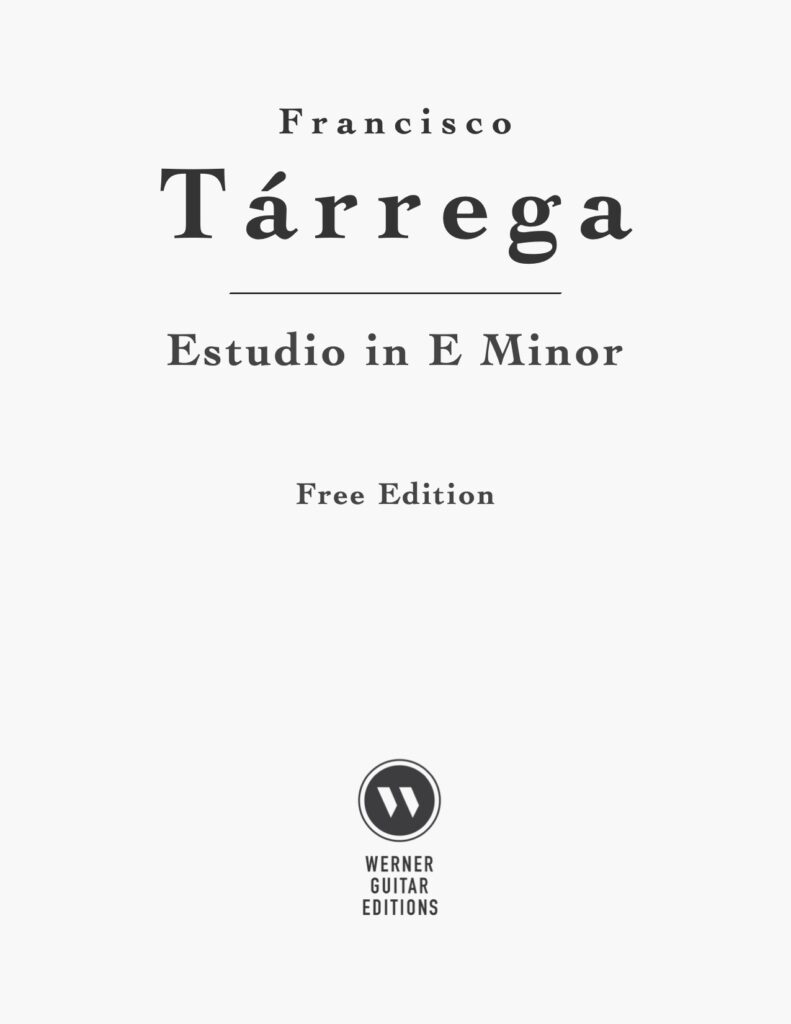
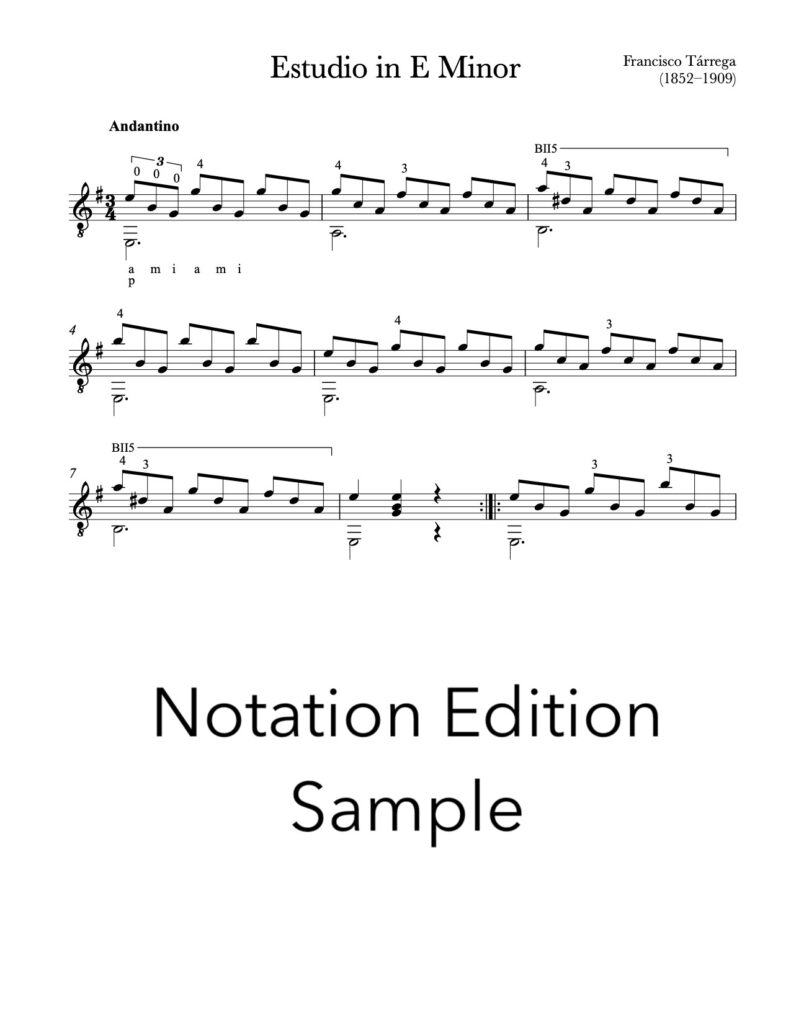
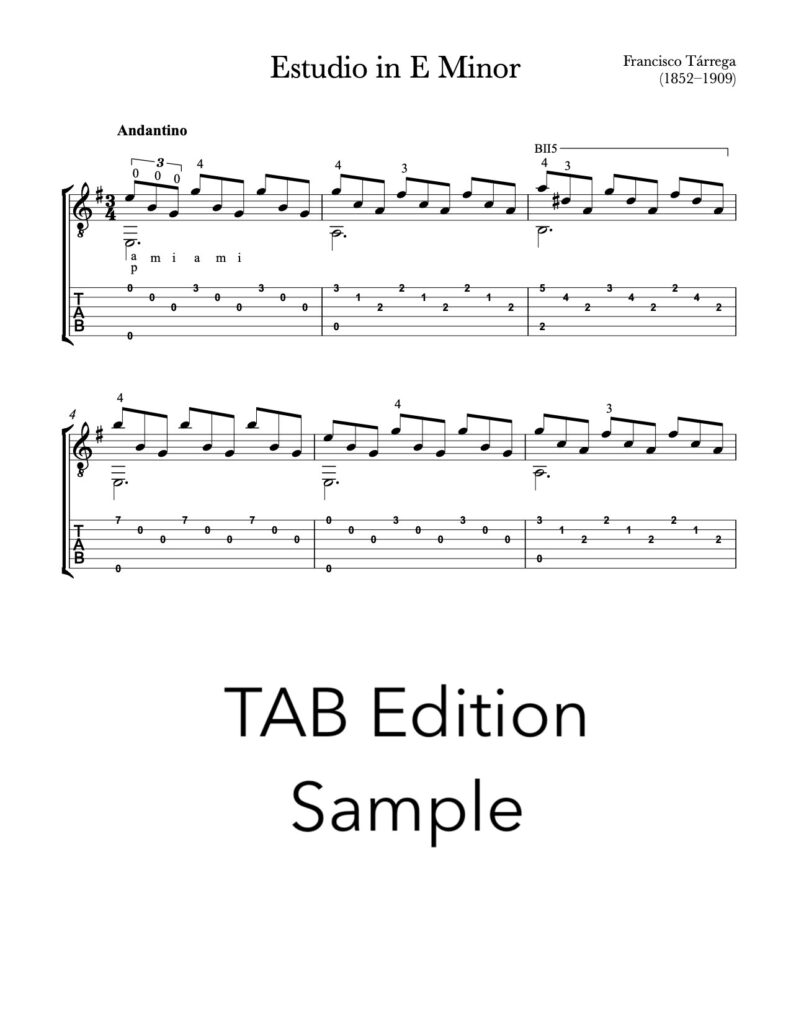
More Video Lessons
This piece is available as an individual selection or in my grade 4 book (see below).
Lesson from my Grade 4 book: Estudio in E Minor by Francisco Tárrega (1852-1909). YouTube Video Lesson Link. A nice melody with a full arpeggio accompaniment. This piece explores and develops barre technique and is a good preparation for Lagrima by Tarrega which will be the next piece. I give a lesson on playing the melody on its own and three ways to practice the barre. It is a good idea to approach tricky barre passages in a variety of ways: Pause and Prepare, Shape Recognition, and Destination Points.
Here’s a past video for the individual edition. Youtube Video Performance & Lesson.


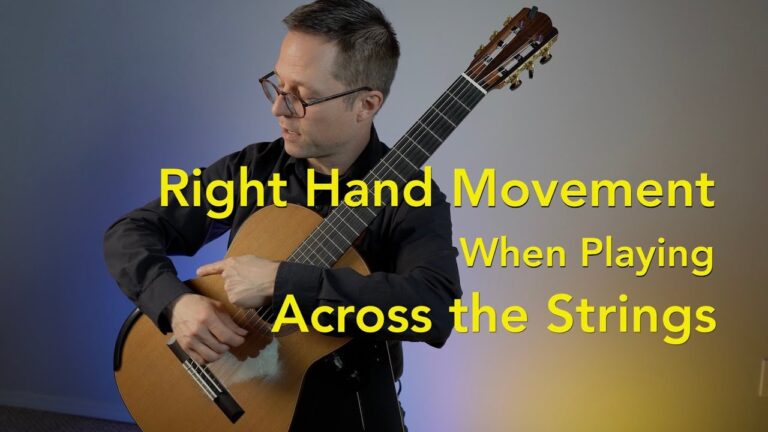
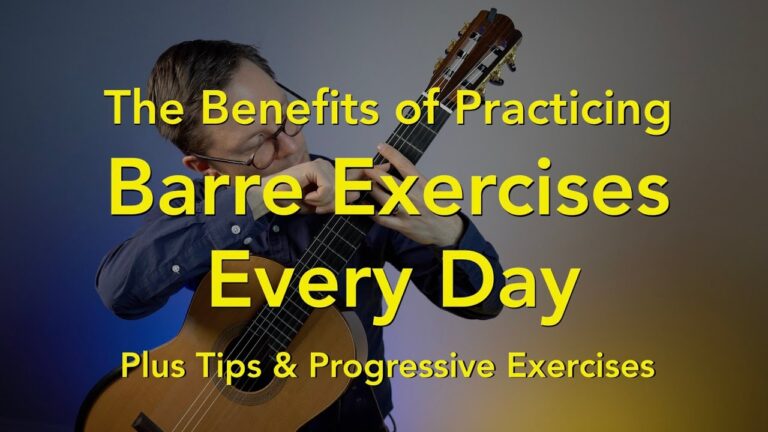
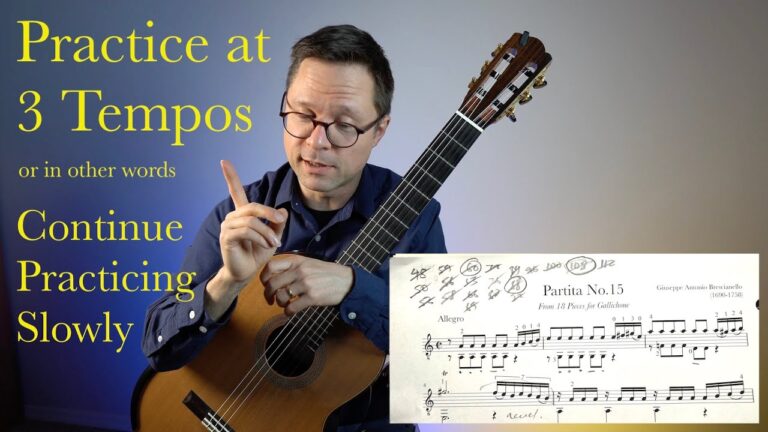
Thank you for your two lessons on the Study in E-minor attributed to F. Tárrega. I ran across an interesting discussion on a classical guitar forum about this piece and whether or not it was actually written by Tárrega. This led me to a video performance by Peo Kindgren of his own “easy” or simplified version of the study, but I could not find the sheet music that was apparently available on his website some years ago.
However, after additional searching, I found two versions of the piece in Jerry Willard’s “The Library of Guitar Classics” (revised and updated edition, 1998). Both of these versions were somewhat different from yours and other “standard” versions of the work. In the Willard tome they are each called “Estudio” without referring to the key. They are in E-minor, but in an interesting time signature of 9/8. The second version is more accessible to students than the first, as it makes much easier substitutions for the three instances of the BII5 barres. I plan to learn the simplified one first and then tackle the more difficult one after gaining more proficiency with barres.
Thenk you very much for this, simple and beautiful.
Thank you very much. I had lost my copy of Asturias and also didn’t realise it was subtitled
Bradford You are selfless when you helping students to learn. People like me who can’t afford to pay but have a fire to learn, you are blessing. Hope some day I will be able to donate. Thank you.
Hello Bradford,
I enjoy your weekly newsletter. In your last issue you provided a lesson on Estudio in E Minor by Tarrega which is about my level. In the free PDF score for this piece you indicated signs like BII5 and BV3 followed by a long line. They might be repeat signs but I cannot figure out what they are telling me. Could you explain, please. Herman
It indicates barré (placing the 1st finger over multiple fretted strings). So BII5 = Barre the 3rd fret over 5 strings. BV3 = Barre the 5th fret over 3 strings. As demonstrated in the lesson video. Hope you enjoy!